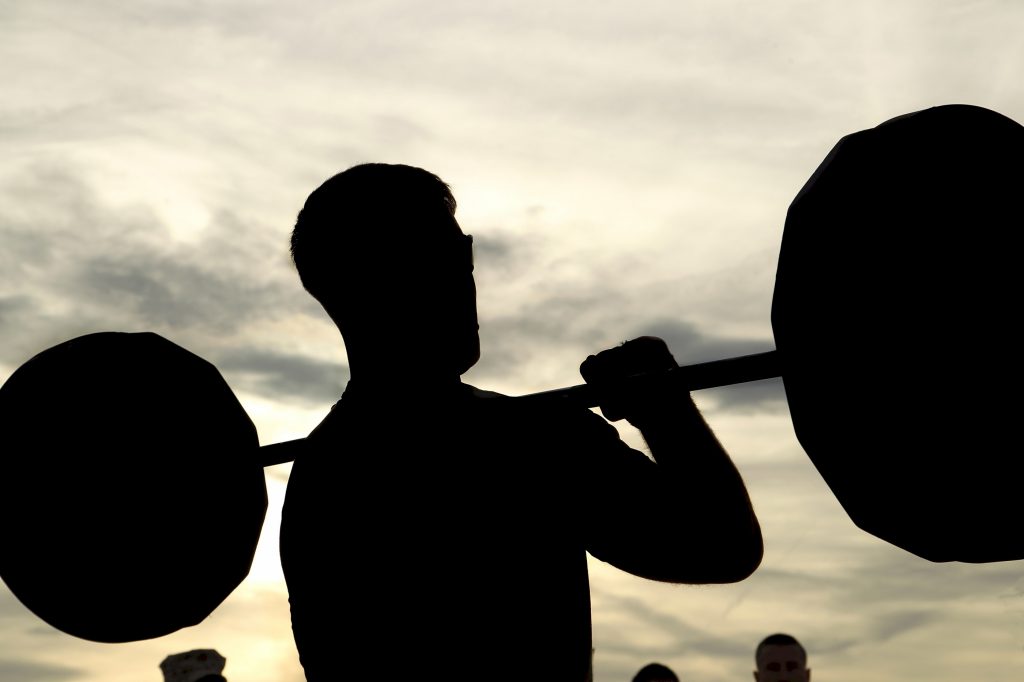
“Compound exercises – work muscles in groups. They are the most efficient way to work your muscles vs. isolation/circuit training. Why spend hours in the gym hitting every body part? Compound exercises are for more effective than isolation.” – John McCallum
I get asked all the time what my “upper body routine” looks like and what specific exercises should be targeted to get the physique of a Men’s Health model.
If it is not apparent by now, I am a huge advocate of compound exercise and argue that they are all one needs to build the ideal male physique. Accessory work has been grandfathered in so to speak to every workout regimen due to the deep historical precedent that was set by our forefathers the bodybuilders. The fact of the matter is you don’t need isolation work to look jacked. They are just an inefficient use of your precious time.
Forget about arms. Your presses will take care of triceps and your rows/chins will take care of your biceps. Biceps are a pure vanity muscle. If you have low enough body fat, you don’t ever need to do any ab work. It is simply science.
Focus on your diet and compound lifts and that’s all you will need to achieve the body of your dreams.
Press History
Now, on to the press. No, I’m not talking about the bench press. The (overhead) press is the oldest upper body exercise known to man that is done with a barbell.
The Press (now commonly called Overhead Press) was originally called the “two-hands press”. This exercise has fallen out of flavor due to the rise in popularity of the bench press. But before this was the standard metric of upper body strength.
The Bench press, (powerlifting event) became popular in the 1950s once again by bodybuilders who enjoyed the aesthetics of a large chest and was added as a standard contest lift in the 1960s. The final nail in the coffin of the old school compound lifts happened when the clean and press was eliminated from the Olympic weightlifting competition after the 1972 Olympics. In modern day hardly anyone does the press and with the unfortunate rise of circuit training, (of which we reviewed earlier) the last remnant of the Press is only found in machines called the “military press” which is a behind the neck press.
The reason it was eliminated from the Olympics is that contestants could lean back and arch their back essentially bench pressing the bar as opposed to it being overhead. The judges had difficulty marking/judging the movement.
Why Press?
It’s the most useful upper body exercise for the very fact that it is NOT just an upper body exercise. By virtue of the fact that the lifter must stand to perform the exercise and involve the entire body (starting at the feet on the floor, legs, hips, core, chest, shoulders, arms) makes it brutally effective.
Also, the bench press starts from the top down with muscle contraction as the advantage at the bottom to explode into the top phase of the movement. (similar to the squat) The Press is more akin to the Deadlift where the motion begins from more or less a dead stop.
Press 101
- Always start with an empty bar
- Bar height is the same as the squat which is mid sternum
- Grip is narrow, just outside of shoulder width producing vertical forearms (never use a thumb-less grip)
- Bar should lie in the heels of the your palm such that there is no pressure on your wrists
- Feet should be comfortable and roughly shoulder width apart.
- Lift your chest up, step up into the bar and the step back from the rack
- Take a deep breath and drive the bar over your head.
- Bar path should be vertical as with all the compound movements
- Do not bend your knees for a bounce. That is a completely different exercise called the push press. People often cheat this way when the weight starts to go up.
- Once the bar is overhead lock elbow and shrug your traps at the top of lockout.
- Remember to keep the bar close to your face in the motion. The closer you keep the bar the straighter/more efficient the bar path will be.
The Press is a very hard move and you will often see guys in the gym being able to put up huge amounts on the bench, squat, and deadlift but a very light amount on the press. This is because it has not been trained and often forgotten. Due to the popularity of the bench as the single most recognized resistance exercise in the world, the press has sadly gotten swept under the rug. It’s time to bring back the old school and make the press the “metric” that determines one’s upper body strength. I long for the day that I walk into a gym and hear “How much can you press, bro?”
